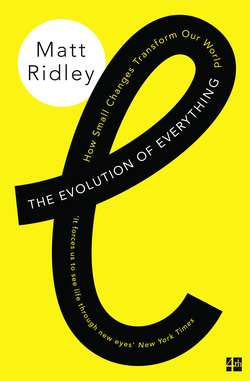Читать книгу The Evolution of Everything: How Small Changes Transform Our World - Matt Ridley, Matt Ridley - Страница 37
The evolution of marriage
ОглавлениеOne of the characteristics of evolution is that it produces patterns of change that make sense in retrospect, but that came about without even a hint of conscious design. Take the human mating system. The emergence, fall, rise and fall again of marriage over the last few thousand years constitute a fine example of this pattern. I am not talking about the evolution of mating instincts, but the history of cultural marriage habits.
The instincts are there, sure enough. Human mating patterns plainly still reflect ingrained genetic tendencies honed in the African savannah over millions of years. Judging by the modest difference in size and strength between men and women, we are clearly not designed for pure polygamy of the gorilla kind, where gigantic males compete for ownership of stable harems of females, killing the predecessor male’s babies when they succeed. On the other hand, judging by the modest size of our testicles, we are not designed for the sexual free-for-all of chimpanzees and bonobos, where promiscuous females (in what is probably an instinctive bid to prevent infanticide) ensure that most male-to-male competition happens between sperm rather than between individuals, blurring paternity. We are like neither of these. Hunter-gatherer societies, it turned out once we got to study them starting in the 1920s, are mainly monogamous. Males and females form exclusive pair bonds, and if either sex desires sexual variety it largely seeks it in secret. Monogamous pair bonding, with fathers closely involved in providing for offspring, seems to be the peculiar human pattern that men and women adopted for most of the past few million years. This is unusual among mammals, much more common among birds.
